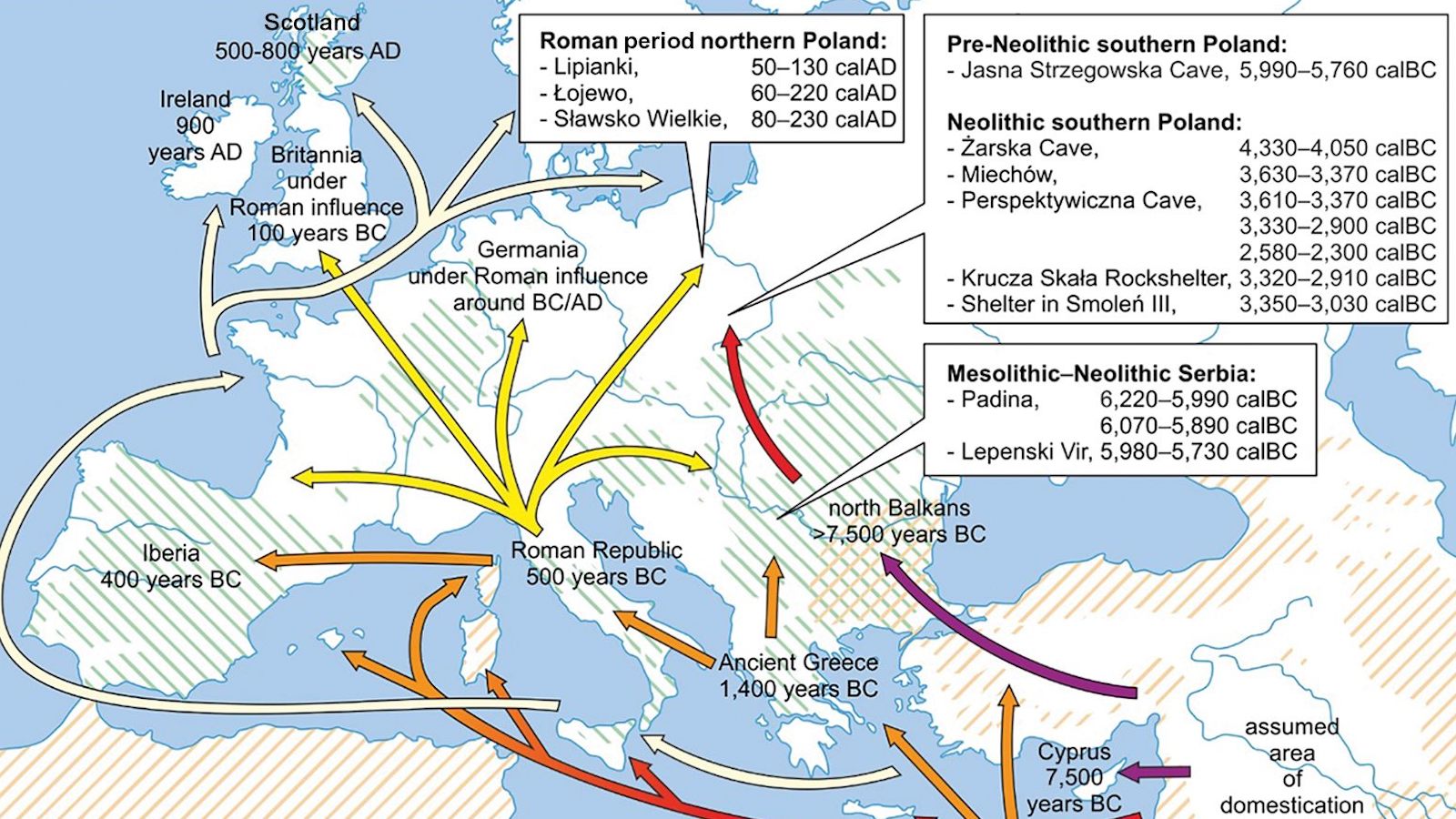Ancient migration: Bering Strait land bridge from Asia to North America was not a one-way road

- The first humans to enter North America migrated from Siberia to modern-day Alaska across the Bering Strait land bridge.
- DNA analysis of recently discovered skeletal remains shows that migrants also moved in the opposite direction, back from Alaska into North Asia.
- The genomic study fills in a 12,000-year gap in ancient human history to reveal highly interconnected population dynamics in North Asia during the early Holocene.
To see the path that humans took to enter North America, you’ll have to visit the seafloor beneath the Bering Strait. There lies an ancient land bridge, now submerged, that was part of a vast subcontinent called Beringia, which was around the size of modern Australia. During the Ice Age, some 20,000 years ago, Beringia was a grassland steppe. At the end of that Age, sea levels rose dramatically, and Beringia vanished beneath the Pacific Ocean.
Beringia was home to large mammals like wooly mammoths — and briefly, to a small group of humans trekking from Siberia toward Alaska.
The imposition of a colossal body of water might have ended the earliest migrations and isolated the populations on each side for some time. But the distance from Alaska to Siberia was undoubtedly passable for even the earliest boats. Today, the Bering Strait is 82 kilometers (51 miles) wide at its narrowest point. Researchers estimate that after their initial journey 20,000 years ago, humans migrated in other major events, 5,000 and 1,000 years ago.
Scientists until now have focused intensely on mapping migrations from Asia to America. Now, movement in the other direction — from North America to North Asia — has taken some of the spotlight.
Groundbreaking research suggests that the Bering Strait land bridge was not a one-way road. The new findings, published in Current Biology, summarize the genomic analysis of skeletal remains from ten individuals in three areas of North Asia: Siberia’s Altai Mountains, the Russian Far East, and the Kamchatka Peninsula.
The team of international collaborators provides evidence of re-migration from America to Asia as recently as 1,500 years ago. Their work suggests that our early ancestors were far more interconnected than we knew.
Reverse migration
In 2018 and 2019, researchers excavated the remains of three individuals between 500 and 1,000 years old from the banks of the Kamchatka River, near Nikolka Mountain. The region is part of the Kamchatka peninsula, and it hangs far southwest of the Bering Strait. The specimens are some of the first skeletal remains ever found in this remote area, and they are well preserved after spending perpetuity in a cold climate.
The researchers had reason to believe these individuals might have some Native American ancestry. In 2019, scientists published genomic, archaeological, and linguistic data to show that people living in northwestern Alaska traded with Siberians, suggesting that the Asian and Native American populations interacted. Overall, the idea of back-migration makes sense. When the Bering Sea dipped below water, it only closed off a pedestrian means of transportation. We know that starting 6,000 years ago, humans traveled in boats from Asia to America.
Still, the Kamchatka peninsula is far from the coast. Evidence of Native American ancestry in these populations could mean that migrations were far more extensive than previously imagined.
A complicated family tree
The researchers published in Current Biology compared the ancient DNA samples with DNA from ancient Native American populations from the Aleut, Athabaskan, and Old Bering Sea lineages. With these data, the researchers could construct different family trees to best explain the ancestry of the three Kamchatkan specimens. The results revealed that the three individuals had significant Native American ancestry. When they analyzed present-day DNA from Koryaks, indigenous people who live north of the Kamchatka peninsula, they detected an even stronger signal.
To explain the level of similarity the researchers found in the specimens’ DNA, the researchers concluded that Native Americans must have returned to the region twice: the first time as many as 5,000 years ago, and the second time around 1,500 years ago.
A continuous, gradual migration or multiple isolated events could explain the findings. Also, rather than coming into contact with Native Americans, the Kamchatkans’ ancestors could have inherited the DNA from other Siberians in the area who carried this heritage. One finding, though, is clear: Nomadic humans traveled very long distances, and there were continuous or repeated gene flow events from North America into the remote Kamchatka peninsula.
Migration makes for surprises in Siberian heritage
Seven other skeletal remains, from Russia’s Far East and Siberia’s Altai mountains, highlight that the area was a hotbed of cultural crossings.
Six of the remains came from the rugged Altai and are between 5,500 and 7,500 years old. Ancient humans buried one of these individuals with ritualistic items, including religious costumes that the researchers attribute to potential shamanism. In these skeletal remains, the researchers detected the presence of ancient Northeast Asian ancestry initially described in groups from the Russian Far East. This data point stands out as the westernmost instance of this ancestry, falling some 1,500 km farther to the west than anyone previously recorded. The researchers describe these groups as newly discovered hunter-gatherers connecting North Eurasian and Siberian ancestry.
The last individual was found near the border of Russia’s Far East with China. At 7,000 years old, it was one of the oldest specimens analyzed in the study. DNA analysis reveals that this specimen derived more than one-quarter of its ancestry from the Jomon people, who lived in the Japanese archipelago. This genome suggests the Jomon islanders maintained some contact with mainland populations in present-day Russia and China.
Ancient mobility and ancient wisdom
This paper contributes knowledge to questions that connect all of humanity — questions such as when and how the first peoples came from Asia to America. It also gives us real insight about how far ancient populations moved, and to what extent peoples of different cultures interacted.
Ironically, current divisions between the very regions under study — Northern Asia and the Americas — rule out the analysis of any additional evidence. According to statements from Cosimo Posth, a co-author of the paper, this research was only made possible by collaborations with Russian scientists, who exported the samples before fighting broke out in Ukraine.
Though wars and sundry disputes undoubtedly marked the connections between ancient Asian and American populations, there were also growing families, bustling trade, and the sharing of cultures. This research adds to a growing body of literature that suggests our ancestors were much more mobile and interconnected than we had ever thought. People in the modern era would do well to remember our mixed ancestry and pay homage to it.





